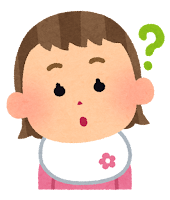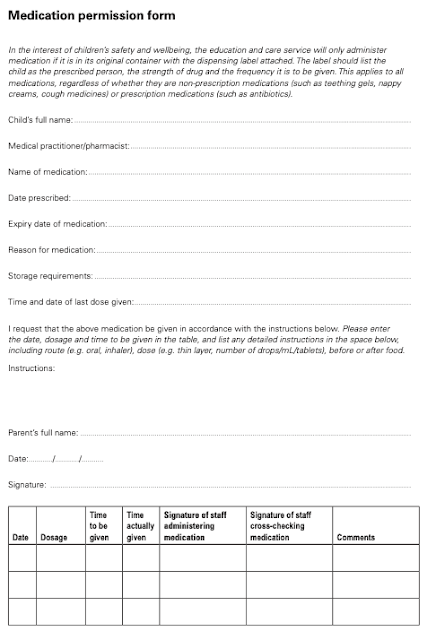Childcare|CHCECE002 #1 - Support each child's health needs
學習筆記 Childcare
CHCECE002
Ensure the health and safety of children
#1 - Support each child's health needs
 |
| 來源:いらすとや |
.a childcare professional has a duty of care to the children, colleagues, parents and anyone in the service
.understand + follow legal requirements & policies & procedures → ensure duty of care responsibilities are carried out
.manage emergency situation: keep up to date first aid methods, renew appropriate certificates
.importance of supervising children and minimising risks
# Communicate about children's health needs
 |
| 來源:いらすとや |
.Quality Area 2 of the NQS focuses on children's health and safety
NQS 2.1 Each child's health and physical activity is supported and promoted
NQS 2.2 Each child is protected
.communication (2-way process)
> listen to the views of families around their child's health
> be sensitive to their cultural and religious values
> regularly and openly with families about their child's health needs
> invite families to provide information (past illnesses, immunisation records, particular issues etc.)
> if the child has a specific condition (e.g. asthma, anaphylaxis, epilepsy, food intolerances, allergies) that needs special attention, a Medical Management Plan may be provided by the family and a care plan should be put in place
> provide opportunity for staffs to help them guide the child in a healthy diet and lifestyle
.child's family: have detailed knowledge and records of own child's health background and specific health needs
> before commences, discuss health needs with family and relevant staff
> complete enrolment form
> enable adequately support and monitor the health
.information about health needs: documented accurately, all staffs should be made aware of, educated about, any potentially serious situations
> for example: food allergies and intolerances of the child
- clearly display in the kitchen area
- eating food that is consistent with advice provided by families
- any requirements families regarding child's dietary requirements, likes, dislikes
- regular consultation with families
# Confidentiality of individual health needs
.ensure their right to privacy
.demonstrate respect and sensitivity towards their personal information
.be sensitive to the child
.respect enough not to embarrass them
.should not be disclosed to anyone who does not need to know
.under no circumstances should the information be passed on to other families or others using the service
.families are not required to advise the service of all of a child's conditions, unless withholding this information would place the child at risk
# Administer medication
.keep written records whenever medications are administered
.medication: tablets, capsules, medical syrups, vitamins, sprays, injections, topical creams, teething gels
.need to have correct parental permission to administer medication (prescription/doctor-prescribed, non-prescription/from a shop or chemist)
.2 people are required to check that correct medication is given to the right child
.after giving medications, log correctly on medication records and the parents must acknowledge this
 |
| Sample medication permission form Source: Staying Healthy: Preventing Infectious Diseases in Early Childhood Education and Care Services (Staying Healthy, 5th edn) |
.emergency situation: permission may be given verbally by parent/authorised person (clarified on the enrolment form)
> if parent/authorised person is unavaulable, a registered medical practitioner or emergency service may also give permission
.long term-treatment: require a letter from the doctor giving specific administering details
> based on service's policy, staff may be able to refuse medication if he/she feel not suitable or uncomfortable
# Procedure for administering medication
.Liquid oral (by mouth) medication
1. wash hands
2. shake bottle well
3. check the child's name, amount to be taken, time to be taken on the bottle and the chart
4. check the name, dosage, expiry date of medication on the bottle
5. have someone double-check
6. measure the amount and check this at eye level
7. give the medication to the child
8. seal/secure the lid, put it away, store correctly
9. wash hands
10. record and sign
.Ear and eye drops
1. wash hands
2. prepare to administer following steps 3 & 4 above
3. hold the child in a comfortable position
4. administer the drops and comfort the child
5. wash hands
.Ointments
> apply using a clean glove on hands
> ensure the child does not have a latex allergy
.Anaphylaxis injection
> may administer by anyone who has had prior anaphylaxis training
# Storage of medication
 |
| 來源:いらすとや |
.medication hand in directly to the relevant staff
.medication not be left in the child's bag
.make sure it's on original packaging with the child's name on the label
.non-prescription medication: clearly marked with the child's name
.store in a sealed, labelled container
.keep out of reach of the children
.store at the correct temperature in a fridge or medical cabinet as directed
.any leftover/expired medication should be taken to the local chemist for disposal



留言
發佈留言